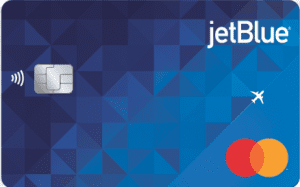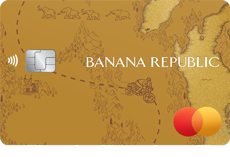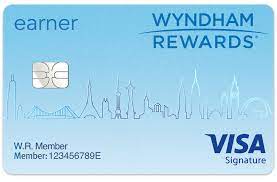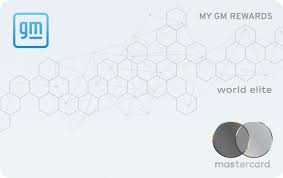Barclays, with its global presence and diverse suite of services, stands as a traditional banking giant. On the other hand, Marcus, a relative newcomer backed by Goldman Sachs, has gained attention for its innovative approach to online banking and customer-centric features.
Let's compare their banking services side by side.
Savings Accounts
Both Barclays and Marcus offer competitive rates on their savings account with no fees or minimum deposit.
Barclays provides seamless online transfers to and from other banks and the convenience of direct deposit. Barclays also provides tools such as the Savings Assistant to aid customers in reaching their savings goals.
On the other hand, Marcus provides flexibility for savers with easy access to funds and the ability to set up automatic transfers. Additionally, Marcus emphasizes a user-friendly digital interface, empowering customers with intuitive tools to manage their savings effortlessly.
Both banks don't have money market accounts for individuals.
Barclays Online Savings | Marcus Savings Account | |
|---|---|---|
Savings Rate | up to 4.10%
| 3.65% |
Minimum Deposit | $0 | $0 |
Fees | $0 | $0 |
Certificate Of Deposits (CDs)
While both Marcus and Barclays offer great options when it comes to CDs, Marcus is our winner with more terms and even no penalty CD.
Furthermore, both banks let you be flexible with your CD investments. You can use strategies like CD laddering and mix short and long-term CDs. This flexibility means you have more say in how you invest your money, and you can adjust your CD strategy to match your financial goals.
-
Barclays Bank vs Marcus CD Rates
CD Term | Marcus | Barclays |
|---|---|---|
6 Months | 4.25%
| N/A |
9 Months | 4.15%
| N/A |
12 Months | 4.10%
| 4.00% |
18 Months | 4.00% | 3.25% |
24 Months | 3.95% | 3.00% |
No Penalty CD – 13 Months | N/A | |
36 Months | 3.90% | 3.00% |
48 Months | 3.85% | 3.00% |
60 Months | 3.90% | 3.25% |
Top Offers From Our Partners
![]()
Credit Cards
When it comes to credit cards, Barclays is our winner. It Barclays offers many more options and higher rewards than Marcus cards. However, they mainly offer co-branded cards and not general reward cards.
If you're a big fan of flying with American Airlines, you might want to check out the AAdvantage Aviator Red World card. It gives you awesome stuff like airline miles, better boarding, and other cool travel perks.
Now, if you're more into shopping at Banana Republic and other Gap Inc. brands, the Banana Republic Rewards Mastercard is the way to go. This card hooks you up with rewards you can use at their stores, plus you get discounts, early access to sales, and bonus points for things outside of those brands.
Card | Rewards | Bonus | Annual Fee |
| AAdvantage Aviator Red World Elite Mastercard | 1X – 2X
2X miles for every one dollar spent on eligible American Airlines purchases and 1X miles on all other purchases | 60,000 miles
60,000 AAdvantage miles after making one purchase and paying the $99 annual card fee in full, both within the first 90 days
| $99 |
|---|---|---|---|---|
| The JetBlue Card | 1X – 3X
3 points per $1 spent on JetBlue purchases, 2 points per $1 at restaurants and grocery stores and 1 point per $1 on all other purchases
| 10,000 points
10,000 points when you spend $1,000 in the first 90 days after opening your account
| $0 |
| Banana Republic Credit Card | 1X – 5X
5 points for every dollar spent at Banana Republic, Gap, Athleta and Old Navy. 1 point per dollar on all other purchases | 20% off your first order
20% off your first order at Banana Republic
| $0 |
| Wyndham Rewards Earner Card | 1x – 5x
5X points on eligible purchases made at Hotels by Wyndham as well as on qualifying gas purchases. Earn 2X points on eligible dining and grocery store purchases (excluding Target® and Walmart®) and 1X points on all other purchases (excluding Wyndham Vacation Club down payments).
| 45,000 points
Earn 45,000 bonus points after spending $2,000 on purchases in the first 180 days
| $0 |
Marcus by Goldman Sachs presently offers a single credit card, the My GM Rewards® Mastercard, strategically designed for General Motors enthusiasts.
This credit card presents an array of benefits, including a $100 statement credit for spending $1,500 on fuel per calendar year $50 annual vehicle detailing allowance, with the added advantage of accumulating points through authorized user purchases, and these points do not expire.
One of the standout features is the flexibility in redeeming points, allowing users to apply them towards GM services, aprts and even a new GM vehicle or lease.
Card | Rewards | Bonus | Annual Fee |
| My GM Rewards® Mastercard® | 4x-7x
4 points for every dollar you spend on purchases and 7 points per dollar on GM products, parts and services
| 15,000 points
15,000 bonus points when you spend $1,000 within your first 3 months of account opening
| $0 |
|---|
Mortgage And Loans
None of these banks offers many options for borrowers. Barclays offers personal loans while Marcus doesn't offer options for borrowers.
If you need broad lending options, you may want to choose a brick-and-mortar bank.
Checking Accounts
Both Barclays and Marcus don't offer a checking account, a significant drawback for personal consumers who want to manage their money and not only deposit it in a savings accounts.
Also here, brick-and-mortar banks such as Chase, Bank Of America, Wells Fargo, and others may be a better option.
Which Bank Is Our Winner?
Overall, there is no winner here as both banks offer similar banking products. Both Barclays and Marcus offer great savings rates for depositors who are interested in CDs or savings accounts. However, they don't offer checking and lending options, so it may not be the right place for most consumers.
However, it's important to think about different things, especially the ones that matter most to you. This might include looking at banking services, help with overdrafts, how often you use ATMs, how close the bank is to where you live, and other things that are different for each person.
Compare Barclays Versus Other Banks
Citi offers an excellent range of banking products that cover the majority of your financial needs.
Personal loans, mortgages, credit cards, investment options, IRAs, and wealth management plans are available in addition to savings and checking accounts. Barclays' product line is more streamlined. This bank offers credit cards, savings accounts, credit cards, and personal loans.
The most obvious product gap is the absence of a checking account. As a result, Barclays becomes more of a supplementary bank rather than your primary day-to-day financial institution.
Read Full Comparison: Citi vs Barclays: Which Bank Account Is Better?
Barclays and HSBC are non-US banks that offering various banking services to US customers. Let's compare their banking options side by side: Barclays Bank vs. HSBC Bank
Amex comes out on top with a solid checking option (which Barclays doesn't have), an excellent savings account, and great credit cards.
Barclays Bank vs. American Express Bank: Which Bank Account Is Better?
Capital One is our winner for most consumers than Barclays bank. But, there are important things to consider when comparing them: Barclays Bank vs. Capital One
Both Chase and Barclays offer a significant portfolio of banking services for US-based customers, but Chase is our winner. Here's why.
Chase Bank vs. Barclays Bank: Which Bank Account Is Better?
Barclays provides a comprehensive range of services to US customers, while Ally bank is among the best online banks. How do they compare? Barclays Bank vs. Ally Bank
Both Barclays Bank and Synchrony Bank offer great savings products for their customers, but lack a checking account. Which bank is best? Barclays Bank vs. Synchrony Bank
Compare Marcus With Other Banks
Marcus, on the other hand, made Goldman Sachs banking more accessible to the general public when it debuted in 2016. Our in-depth Marcus review can help you decide if this online bank is right for you. Goldman Sachs is one of the world's largest investment banks, with offices in every major financial center and a client list that includes other banks as well as the state of New Jersey. With Marcus, however, you could be next on the list.
Axos online bank, which provides checking, savings, CDs, investing, and other services, has a lot to offer. A variety of checking account options allow customers to earn interest or cash back. The APY on Axos Bank's Rewards Checking account isn't the highest among online banks, but it's sufficient to justify opening an account as part of a larger online banking strategy, and there are almost no fees.
Read Full Comparison: Axos vs Marcus: Which Online Bank is Better?
CIT Bank provides a variety of savings account options. If you link your checking account and make qualifying deposits, you can earn a higher rate on the two-tiered Savings Connect. The other savings option is the Savings Builder, which offers 0.399 percent if you keep a balance of $25k or more, or make at least $100 in monthly deposits. There is a six-transaction limit per statement cycle, but there are no account maintenance fees.
Marcus provides an impressive 0.50 percent without the CIT hoops. There is no required minimum deposit or balance. You can also make same-day transfers to and from the account of up to $100,000.
Read Full Comparison: CIT Bank vs Marcus: Compare Banking Options
Marcus distinguishes itself through its investment options. With a variety of IRA options, you can experiment with different account types and portfolios. Marcus may appeal to you if you want the convenience of having your funds in a high yield savings account or if you are new to investing.
Synchrony focuses on accounts that help you save money. So there are high yield savings accounts, CDs, and money market accounts. You can also gain access to IRAs. Synchrony does, however, offer a variety of credit cards.
Read Full Comparison:: Marcus vs Synchrony Bank: Where to Save Your Money?
Marcus' banking product offering is more specialized. Marcus' product line reflects its investment pedigree as part of the Goldman Sachs Group. CDs, high-yield savings, investment options, and a variety of loans are available.
Ally has a banking product line that competes with traditional, high-street banks. A checking account, savings account, CDs, mortgages, auto loans, personal loans, retirement products, and investments are among the numerous products available.
Read Full Comparison: Ally vs Marcus: Which Online Bank Is Better?
Marcus is a subsidiary of Goldman Sachs, which is reflected in its banking products. Marcus provides high-yielding savings and CDs, as well as investment options and a variety of loans. This does not, however, include a checking account.
SoFi's banking products are more akin to those of traditional banks. While there are no checking or savings accounts available, rather a hybrid account, you can access loans, mortgages, and investment products. SoFi also offers insurance. CDs and traditional savings accounts, on the other hand, are not available in the SoFi catalog.
Read Full Comparison: Marcus vs SoFi Money: Which Banking Service Is Better?
Marcus, a Goldman Sachs Bank division, provides online savings accounts, CDs, and personal loans. Marcus has no physical locations, so you can only access your accounts through the Marcus website, mobile app, or phone-based customer service.
In addition to assisting you in avoiding typical bank fees, Chime includes useful new features such as early direct deposits and automatic saving. While Chime does not provide credit cards or loans, its savings options and competitive interest rates make it an excellent choice, especially for younger people.
How We Compared Barclays and Marcus: Methodology
In our comprehensive banking comparison, The Smart Investor team meticulously reviewed and compared banks across five vital categories:
Checking Accounts (30%): We thoroughly examined features such as direct deposit, debit card availability, monthly fees, ATM and branch access, check deposit, bill pay options, and account alerts. Special offers available to customers were also taken into account.
Savings Accounts and CDs (20%): Our focus centered on critical factors including the Annual Percentage Yield (APY), minimum deposit requirements, account flexibility, FDIC insurance coverage, special savings offers, variety of CDs, automatic renewal options, and early withdrawal penalties.
Credit Cards (15%): We carefully analyzed rewards programs, annual fees, introductory bonuses, travel benefits, APR, and balance transfer options provided by each bank's credit cards to offer a comprehensive comparison of available features.
Lending Options (15%): We evaluated the variety of loan options offered, encompassing personal loans, student loans, mortgages, secured loans, HELOCs, and Home Equity Loans, providing valuable insights into the banks' lending capabilities.
Customer Experience and Bank Reputation (20%): Our assessment included an analysis of online banking and mobile app usability and ratings, accessibility of customer support, online reviews, JD Power research, Trustpilot ratings, and overall financial stability, delivering a holistic perspective on customer experience and reputation.





